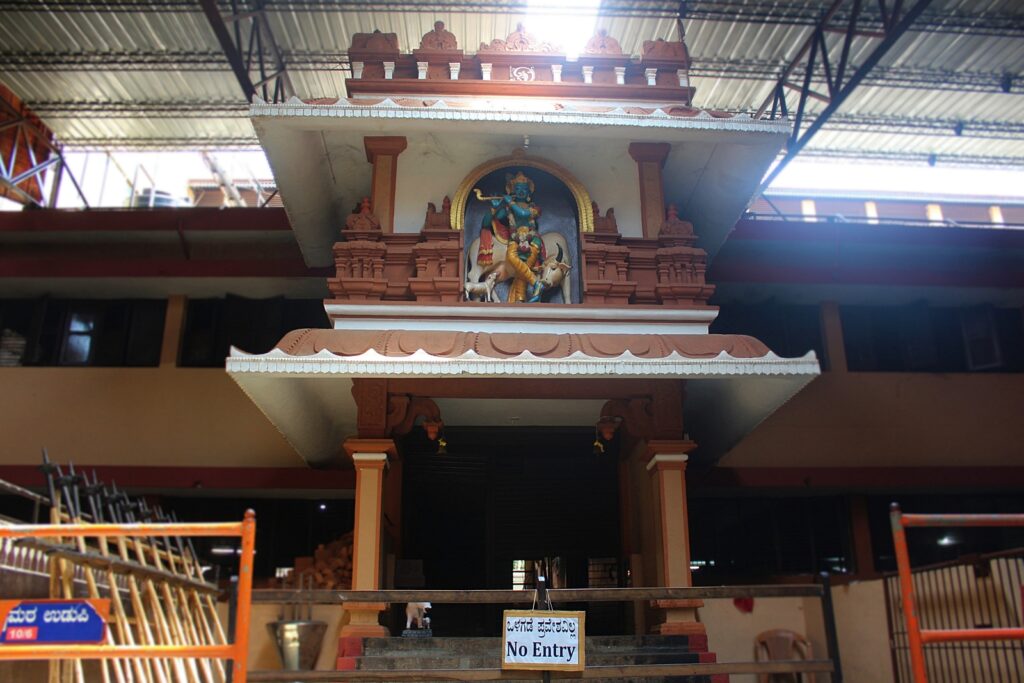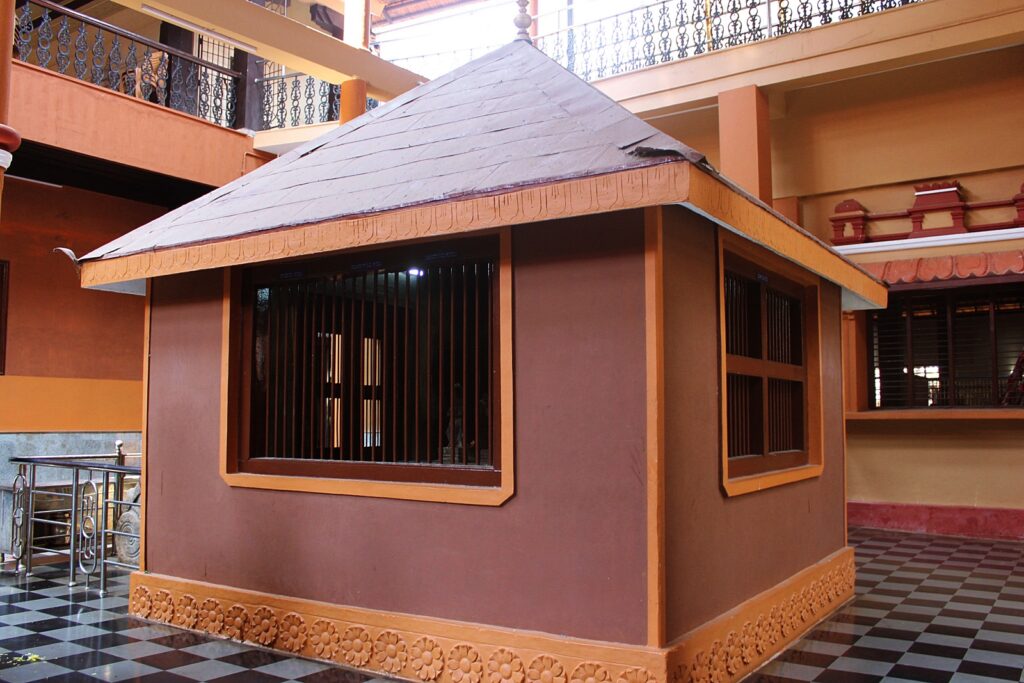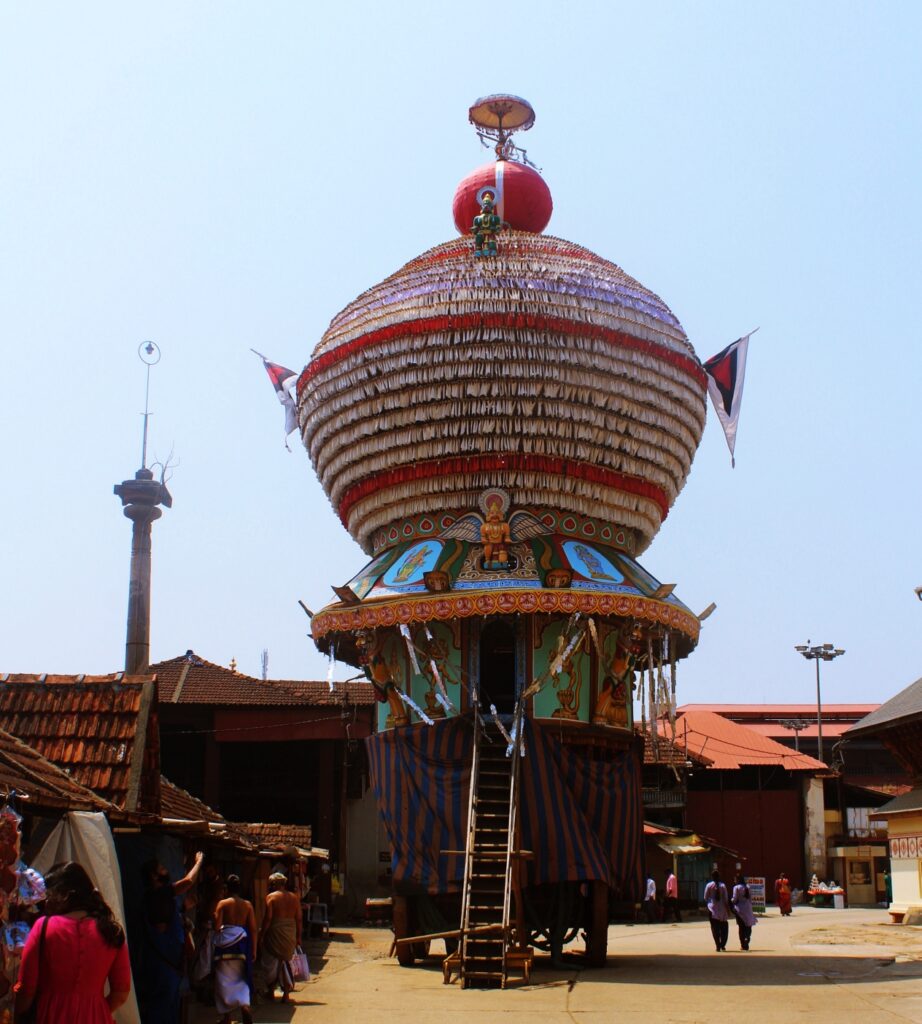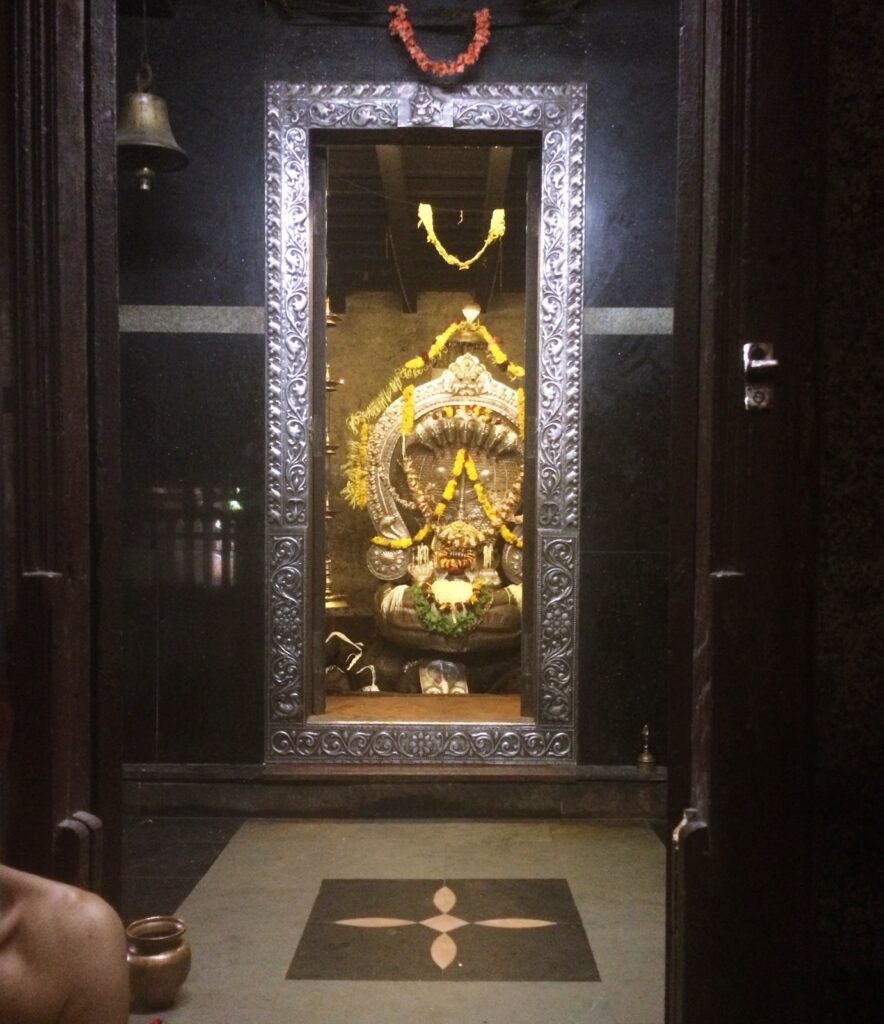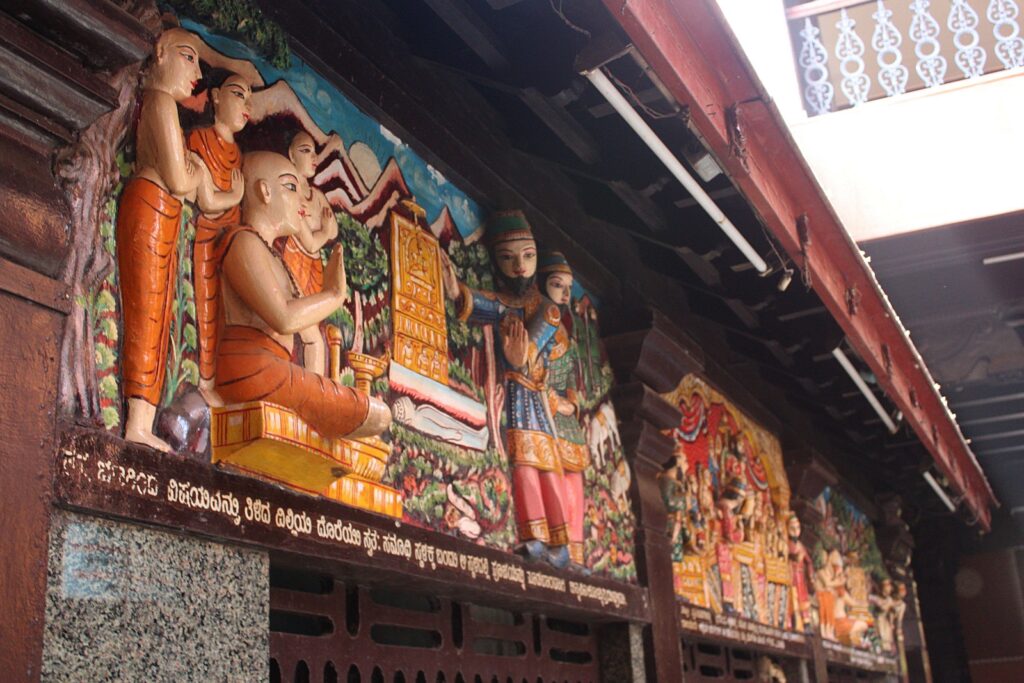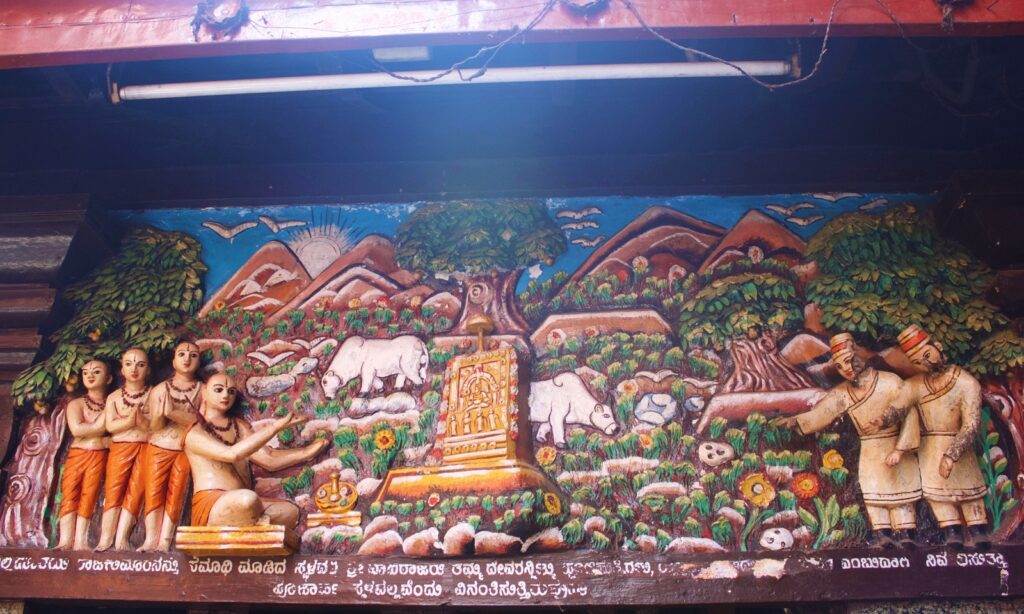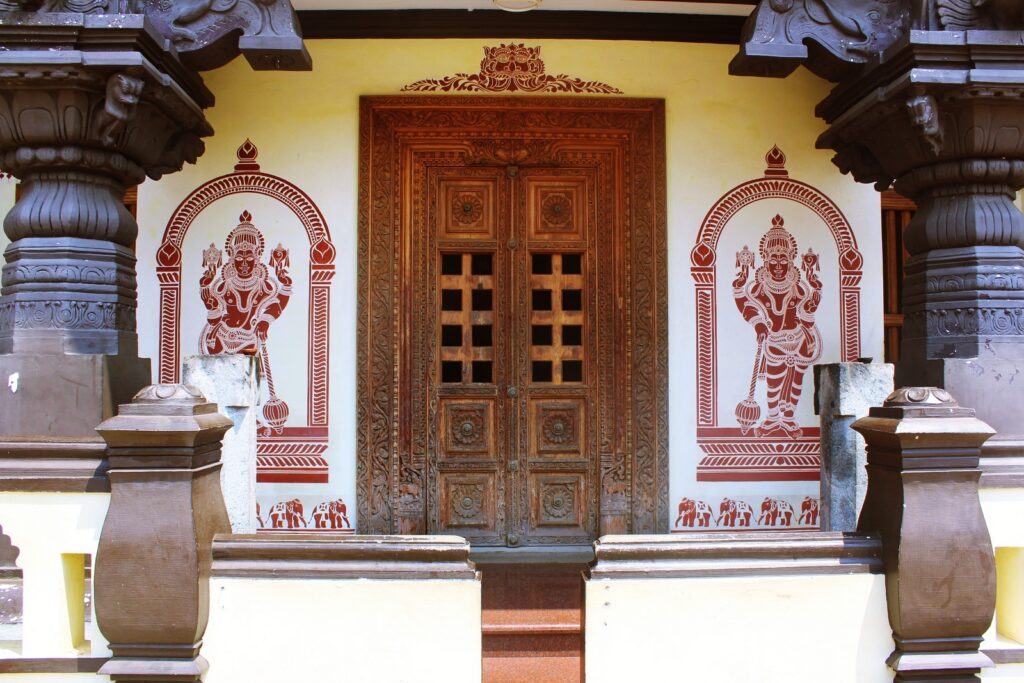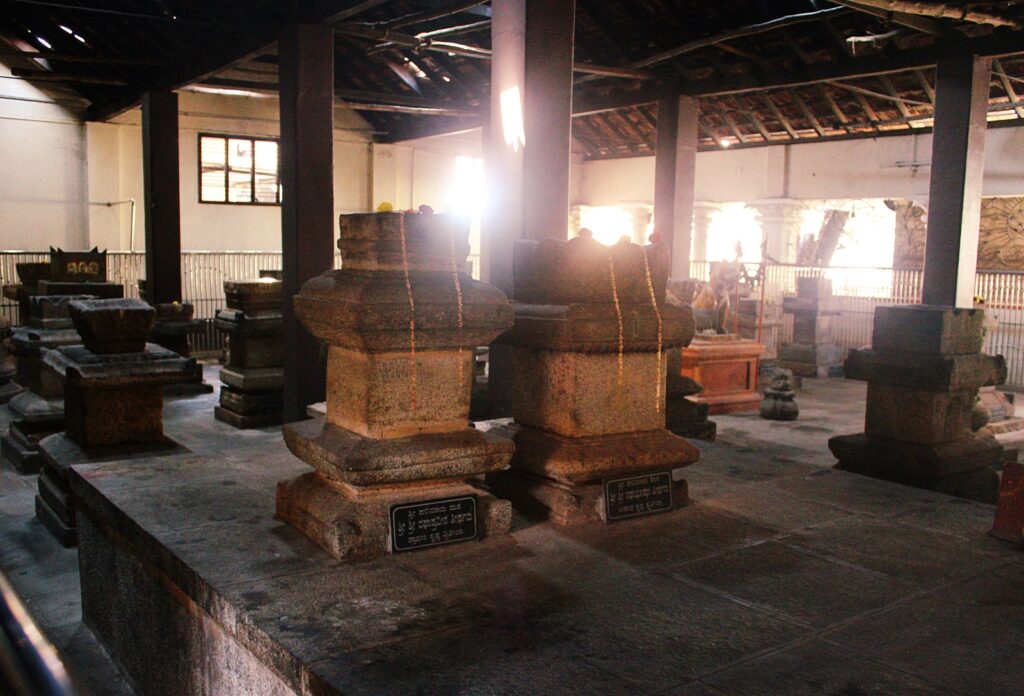Udupi Shree Krishna Temple: Tenets of Dvaita
Hindu temples are the most common sightings in India as they keep alive the notion of Hinduism. Shree Krishna Temple, dedicated to Lord Krishna and Dvaita Matha, is one such well-known communal spot in Udupi. Sri Madhvacharya, the founder of Dvaita philosophy, established Udupi Matha and Sri Krishna Temple in the 13th century to promote dualism. In divine dogma, Madhwacharya implied that two realities can coexist while remaining autonomous. Even now, the legacy lives on! This famed Karnataka temple has been a scene of chants, chastity, and prayers for universal well-being since its foundation. It is located in the centre of Udupi, with the highest Rajagopuram (entrance) among the surrounding structures.

While the temple entryway features Drvia Style pyramidal or kina towers, the interiors showcase an immense Aashram-like expanse with thunderous incantations. As there is no footwear allowed, try to absorb the positive temple energy as you walk around grounded. Ashta Mathas (8 monasteries) handle the daily temple offerings, each with its own Pattada Devaru deity. Admaru, Kaniyoor, Krishnapura, Palimaru, Pejavara, Puttige, Sodhe Matha, and Shirur are the eight mathas. In Kannada, this is known as Ashta Mathagalu! For two years in a row, each Matha is in charge of temple administration.
The main priests of the eight chief Mathas exchange hands biannually in the Udupi Paryaya Utsava rite, as per custom. The temple is currently run by senior pontiff Sri Vishwapriya Theertha Swami and his assistant Sri Eshapriya Teertha Swami from Admar Moola Matha. This temple is also the birthplace of Udupi’s Daasa Sahitya literature. The city is also known as the Mathura of Southern India and is envisioned as Lord Krishna’s final resting place. This temple, on the other hand, has an exceptional tradition for the lord’s deep admiration. Only via the inner, silver-plated glass of Navagruha Kindi may devotees see Lord Krishna.
Table of Contents
Shree Krishna Temple
All ten incarnations of Vishnu can be seen via this nine-holed window. The outside window, Kanakadasa (Kanakana Kindi), is a little windowpane through which saint Kanakadasa, a devoted devotee, gained the hopeful sight of Lord Krishna. Kanakadasa was from a lower caste and was not permitted to enter the temple. He began praying to Lord Krishna from the temple’s backside, steadfast and determined.
The statue of Lord Krishna, moved by Kanakadasa’s devotion, turned around and provided an opportune spectacle. As a result, the Ashta Mathas’ idols (including Lord Krishna) all face west. Kanakadasa Mantapa, a little distance away, houses a magnificent statue of the saint.
Kanakadasa Mantapa
Kanakadasa is attached to Chandrasala Hall, which has dangling bells, illuminated clay lamps, and a majestic atmosphere. A four-pillared platform with a Deepastambam, a traditional sacred oil lamp, stands in front of the Chandrasala Hall beneath a silver awning. Lord Hanuman’s meditation temple stands in one corner, and Shri Madhvacharya and Lord Panduranga’s sculptures brace the inner sanctum. The Lord Vishnu sculpture on the holy altar is made of five metals.
The majestic idol of Balakrishna on a golden chariot, on the other hand, is said to be the most spectacular in the world. The Lord Krishna statue at Udupi Matha is adorned in a diamond-studded attire and garlanded with fresh flowers, converging in a meditational stillness. Each statue’s robe is made with sacred gold yarn threads. The prayer continues with the offering of a hundred thousand Tulsi leaves and the chanting of Sahasranamam by approximately a hundred priests, all day and night.

The temple conducts Anna Dana (lunch Prasadam) in the afternoon, feeding tens of thousands of pilgrims. A cowshed (Goshala) and a Brahma Ratha, the Temple Chariot, are situated on the temple grounds. The Udupi Shree Krishna Temple celebrates Janmashtami, Madhva Navami, and Ratha Sapthami, among other holidays. The expenses of Udupi Krishna Matha are covered via voluntary gifts from devotees and Ashta Mathas.
The sounds of Conch shells and rhythmic patterns of Nagharas wake Swamis and other Matha delegates at 4 a.m. to commence temple operations at the gopuram at Shree Krishna Temple. The Shree Krishna temple is open from 4 a.m. to 9.30 p.m.

